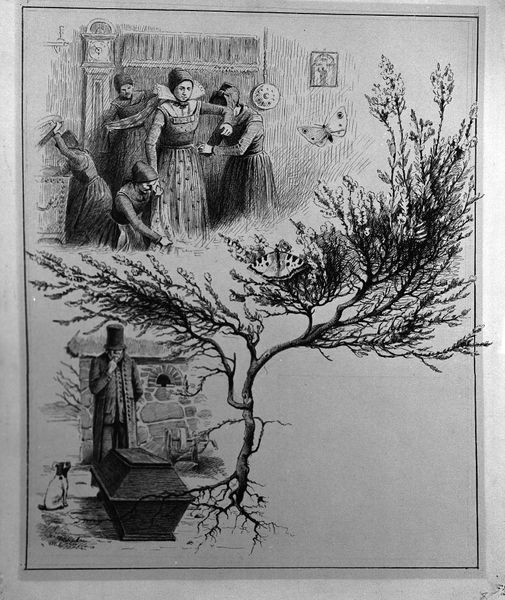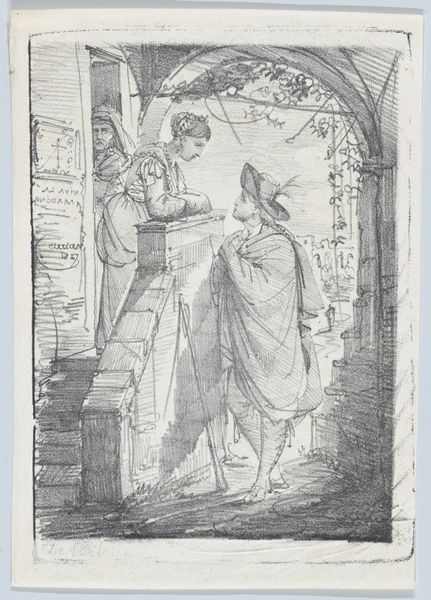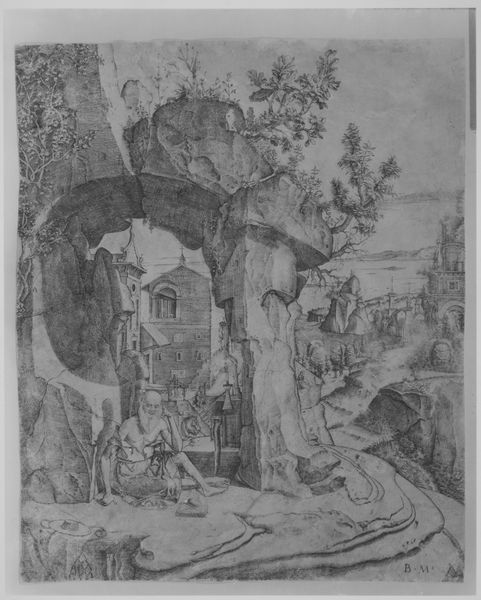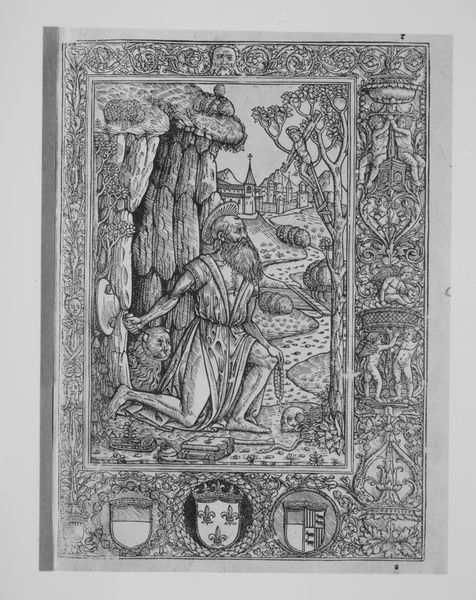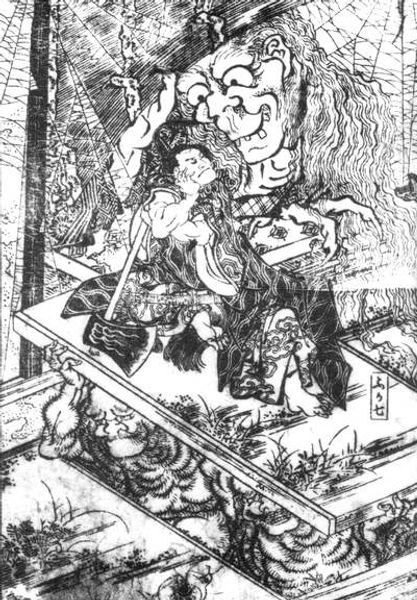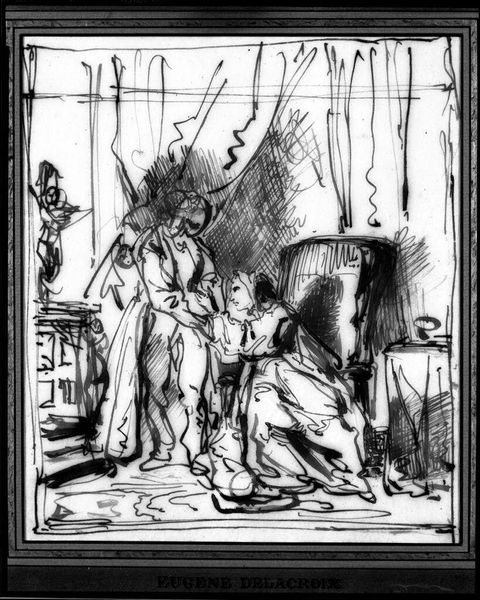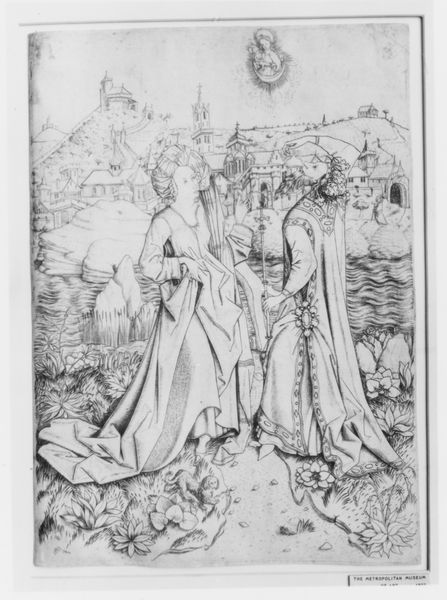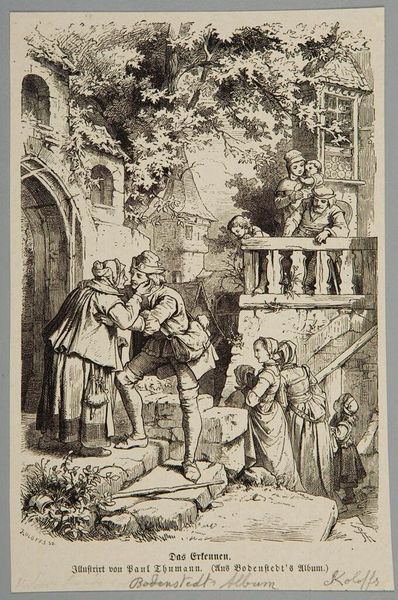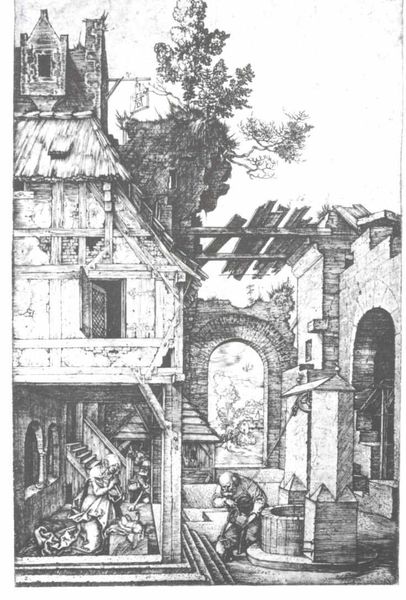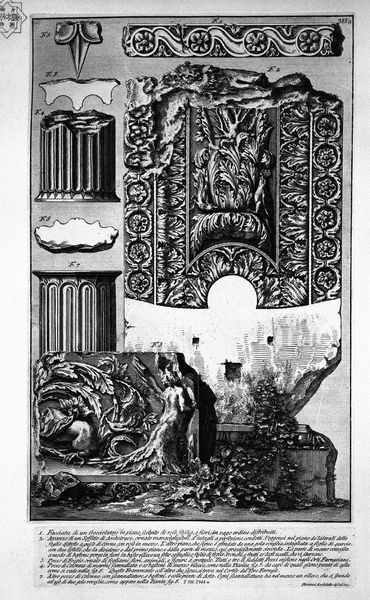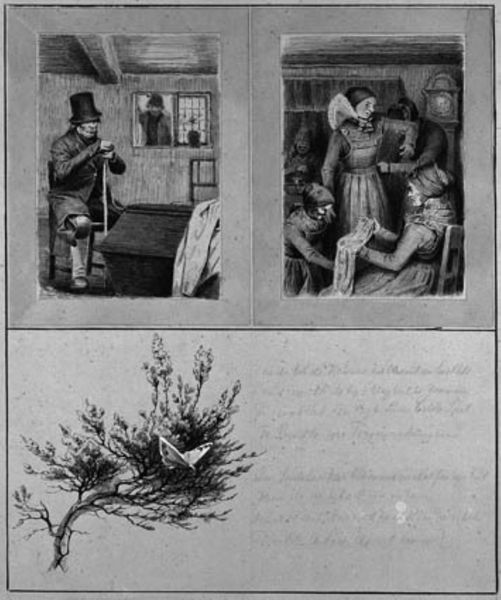
Ikke anvendt illustration til St. St. Blicher: "Mowns". F.o.: bruden pyntes; f.n.: snedkeren ved kisten 1886
0:00
0:00
Dimensions: 323 mm (height) x 279 mm (width) (bladmaal), 287 mm (height) x 237 mm (width) (billedmaal)
Curator: This pencil drawing, created in 1886 by Hans Smidth, bears the lengthy title, "Ikke anvendt illustration til St. St. Blicher: "Mowns". F.o.: bruden pyntes; f.n.: snedkeren ved kisten," translating roughly to "Unused illustration for St. St. Blicher: 'Mowns'. Top: the bride is dressed; bottom: the carpenter by the coffin." It resides here at the SMK, Statens Museum for Kunst. Editor: Gosh, that's bleak, isn't it? The title itself sort of pre-empts any joy you might find. It's all monochrome drama and that peculiar looming tree smack-dab in the middle—it feels like an omen. Curator: Indeed, the composition invites a dialectical reading. Observe how the artist divides the picture plane horizontally. Above, the flurry of activity around the bride is rendered with light, rapid strokes. Below, we have a somber scene punctuated by the heavy, almost gothic presence of the coffin and the stoic figure. Editor: That little dog just tugs at your heartstrings, doesn't he? Perched so forlornly. The top feels almost dreamlike—like memories fading, and that massive, stark tree root kind of growing into them from below. I can't help feeling the bride has already got one foot in that grave. Curator: Note the deliberate contrast between the two registers. The upper scene’s composition is open, with figures interacting and gesturing; whereas the lower zone confines its characters within strict lines: the coffin’s hard edges and the mournful gentleman who appears isolated in his grief. This juxtaposition amplifies the themes of mortality and societal expectation within marriage. Editor: What's fascinating is that even the tree plays a part. All bare branches reaching up but growing from the soil where a coffin resides; the roots are literally gripping to the scene below, making the drawing cohesive. Curator: Precisely. Its bifurcated structure reinforces this central tension: marriage and death. Smidth skillfully manipulates tone and line to express the psychological weight of these opposing forces. It also uses realism and romanticism combined to convey such emotions. Editor: It leaves you feeling a little bit like a voyeur to such profound human sadness. A strange premonition lurking through generations; yet beautiful in its execution, I must admit. Curator: I concur. Despite the gravity, it is a compelling piece, prompting reflection on the inherent fragility of life, expertly visualised through its very structural organisation.
Comments
No comments
Be the first to comment and join the conversation on the ultimate creative platform.
